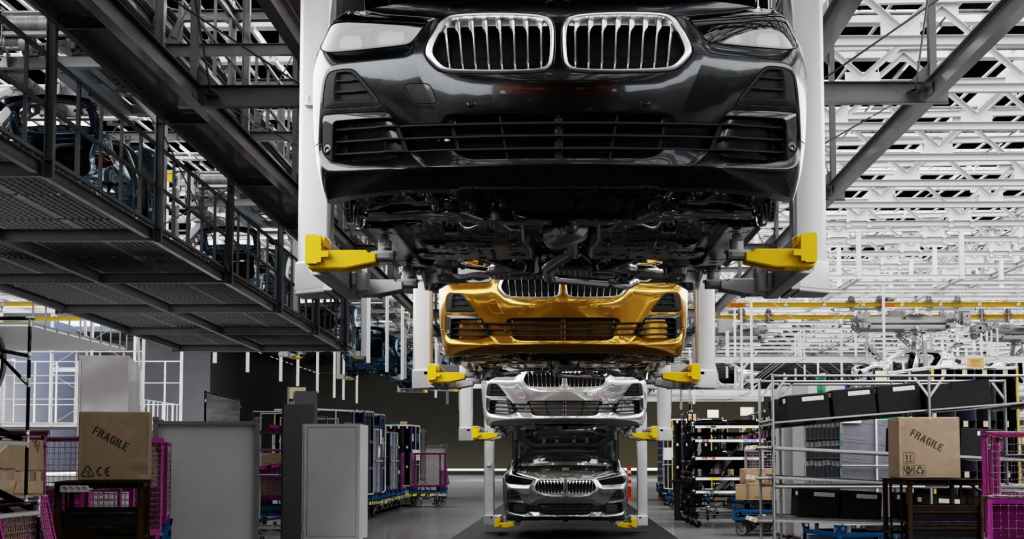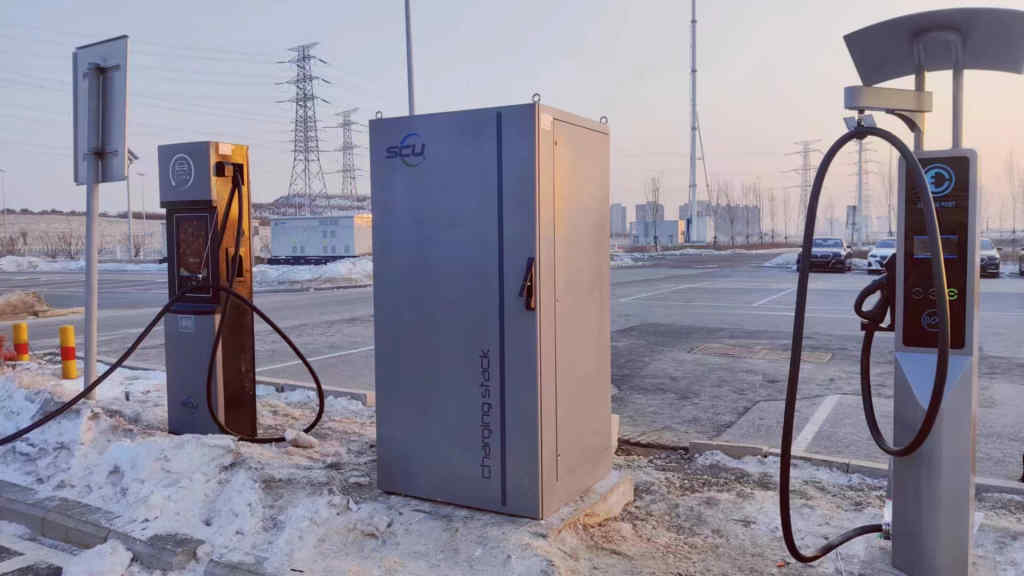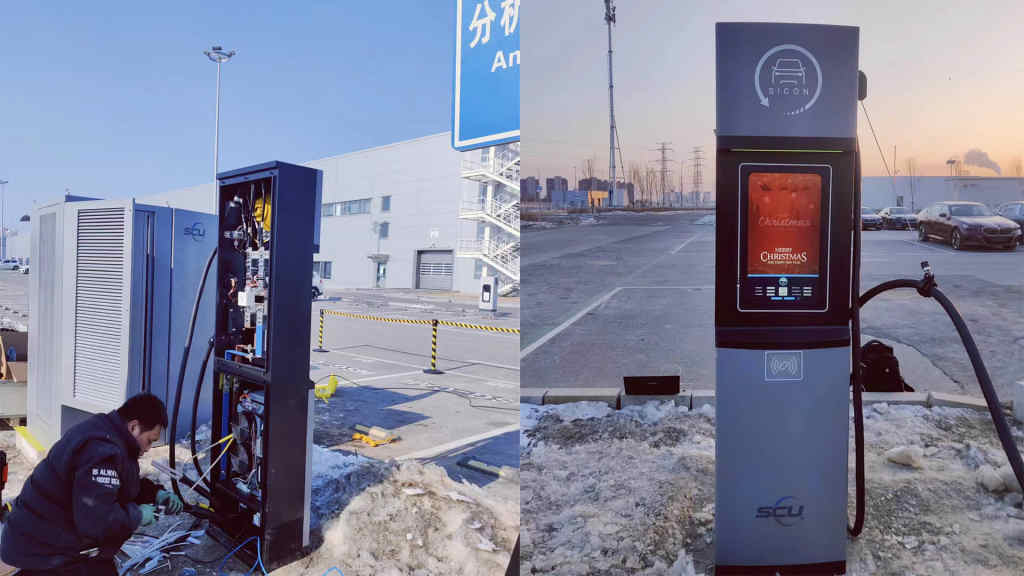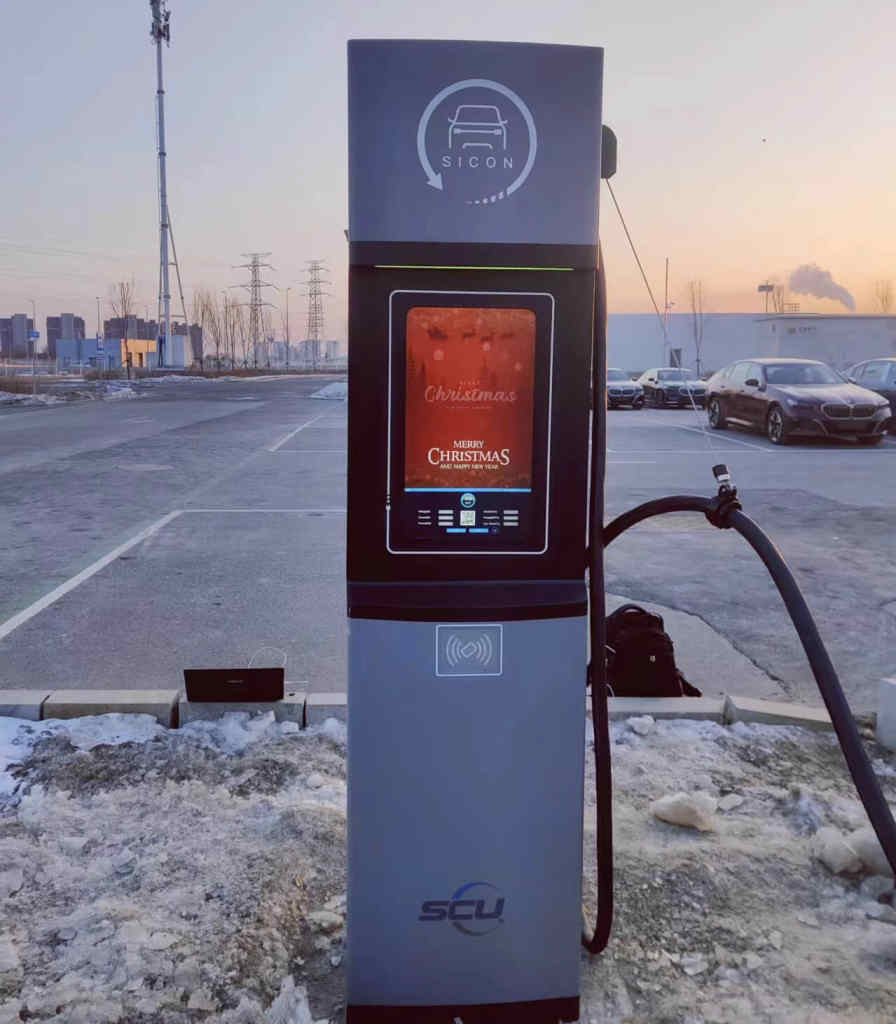“One out of every three BMW EVs in the world comes from the Shenyang production site in China.” In October last year, the total number of employees at the site exceeded 26,000, and the daily output of cars was close to 3,000 units. This site has become a leader in the automotive manufacturing industry with its world-class factory processes and leading technologies. The Shenyang site has become a leading new energy vehicle industry center: from research and development, cells, batteries, electric drive systems, and electric vehicles have all been produced on the site.

We are delighted to announce that SCU has provided customized EVMS series high-power charging stations for the BMW China Regional Assembly Workshop. The terminals are compatible with both CCS2 and CHAdeMO standards. This charging station has been successfully installed in the parking lot, offering testing services for BMW’s newly manufactured electric vehicles.
Product:
300KW EV charging stack+ 500A CCS2 Charging Post+ 200A CHAdeMO Charging Post
The two terminals of the EVMS in this project are the CCS2-500A liquid-cooling large-screen post and the 200A-CHAdeMO charging post.

500A Ultra Fast Liquid-Cooling EV Charger:
There are cables and water pipes inside the liquid cooling charging connector. The cable of the 500A liquid-cooling charging connector takes away heat through the flow of coolant in the water pipe. Because the cable is thin, the liquid-cooling charging connector is 30% to 40% lighter than a conventional charging connector. The liquid-cooling charging connector also needs to be equipped with a cooling unit, which consists of a water tank, water pump, radiator and fan. The water pump drives the coolant to circulate in the connector line, bringing the heat to the radiator and then blowing it away by the fan, thereby achieving a larger carrying capacity than conventional naturally cooled charging connectors.
Traditional EV chargers using air-cooling technology can no longer meet the heat dissipation needs under high-power transmission. Air-cooling technology uses heat exchange through air and is a passive cooling method, while EV chargers using liquid-cooling technology are cooled by compressors. The heat is then taken away through circulating fluid, which is an active liquid cooling method that can achieve precise control and achieve the target effect.

The service life of liquid-cooling EV chargers is longer than that of air-cooling EV chargers. The air-cooling heat dissipation method has very high requirements on the air environment because the air will be mixed with dust, water vapor and other impurities. When air gets inside of the charger, it’s easy to get dusty, resulting in poor insulation and heat dissipation of the EV charger system. Charging Low efficiency and reduced equipment life. There are no air ducts on the outside of the liquid-cooling heat dissipation module. The heat dissipation principle is that the heat is brought to the radiator through the circulation of coolant in the cavity of the liquid-cooling plate inside the module. The surface heat of the radiator can be directly blown away by the air.
21-Inch LCD Partition Display Large Screen
SCU designed a 21-inch large display screen for the CCS2 terminal. The display screen is divided into two parts. The upper screen is an advertising screen that supports automatic scrolling of pictures and videos. The picture is clear and smooth without lag. The advertising screen can place display advertisements, which can be used as brand promotion and value-added services for charging operators, completely bidding farewell to the profit model solely dependent on providing electric vehicle charging services.

At present, the high-power liquid-cooling EV chargers provided by SCU for BMW’s Shenyang production site in China have been successfully installed, which marks the successful cooperation between SCU and BMW in the field of electric vehicle charging infrastructure. We feel very honored to provide BMW with advanced charging technology to support its development in the field of new energy vehicles.
This cooperation is not only a recognition of SCU’s technical strength but also a testament to our joint commitment to promoting a future of clean energy and sustainable mobility. We look forward to providing BMW with more innovative EV charging solutions in future cooperation and jointly meeting the challenges and opportunities in the field of electric vehicles.
